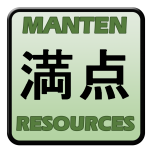Key Features of Jblog 1 Textbook
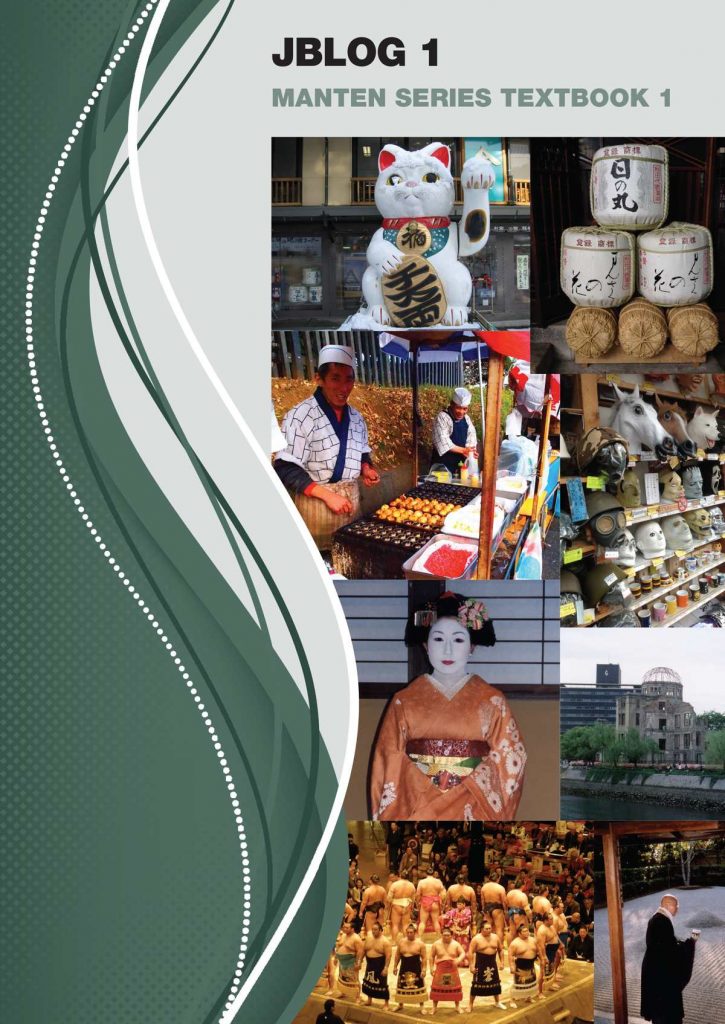
1. The chapter title page includes a chapter summary and an eye-catching photograph; students are more adept at learning from images than they are given credit for.
2. Jblog is a weblog that introduces the cultural background of the chapter. It has a side panel with focus Japanese words. Facts are detailed enough to keep even the most gifted students engaged.
3. The ski challenge section encourages students to try challenges according to their ability, with three levels of difficulty based on the ski run rating system of green for beginner, blue for intermediate, and black for advanced. Each chapter features one differentiated challenge. Worksheets and listening drills also follow this rating system.
4. The Ask Your Senpai column is based on an Agony Aunt column. A problem is posed to explain new concepts of the language, culture, or the language learning experience. For example, the problems you may encounter when using a dictionary.
5. Each chapter ends with Lucy’s Diary. Lucy is the more advanced younger sister in the textbook who models the language in more contextualised texts.
Topics covered in Jblog Textbook 1
Chapter 1: Meet Jake and His Family
In this chapter the main characters of the series are introduced, an Australian family who have relocated to Tokyo for the father’s role at Austrade. Students are introduced to the exciting possibilities afforded by language study and are inspired by the characters as they experience life in Japan beyond the stereotypes.

Content includes:
- Context for learning Japanese
- Introduction to the 3 scripts
- Katakana names
- Map work
- Asking for & giving your name
- titles in Japanese eg さん、くん、せんせい
- Introducing others
- Hiragana table
Chapter 2: Number Frenzy!
The second chapter introduces Japanese superstitions relating to numbers, and the importance of kanji stroke order. The focus on numbers encourages a sense of progress and achievement as students adapt their knowledge of numbers to new settings, such as months, dates, and birthdays. Students learn to question their understanding of familiar topics such as Valentine’s Day, kendo, and gift giving.
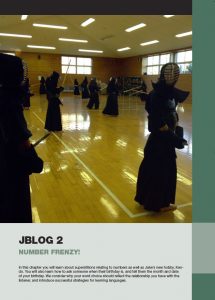
Content includes:
- Kendo
- Numbers in Kanji 1-100
- Months of the year in Kanji
- Giving & receiving
- Valentine’s day & White day
- Sapporo Yuki matsuri
- Basic greetings
- Talking about birthdays (dates)
- Unlucky numbers & seimei handan
- Katakana table
Chapter 3: Family
This chapter focuses on student understanding of how language is learned. Mnemonic skills are developed with a focus on the sound or appearance of a word, learning songs to remember vocabulary, and noticing patterns in question-and-answer construction. The knowledge of numbers is built upon further in the context of counting family members and expressing age.

Content includes:
- Shintoism
- Family members
- People counters (kanji)
- Talking about ages
- Mt Fuji
- Onyomi vs kunyomi
- Hepburn vs Kunrei-shiki romaji
- Yakudoshi unlucky ages
- Linking 2 です sentences with で
Chapter 4: Getting to Know You
The fourth chapter develops the student’s ability to use resources such as script tables to support their understanding. Katakana script tables enable them to access vocabulary for the names of places and countries. They develop an understanding of the purpose of katakana and the links between katakana and other languages such as English and German (ドイツ). A handy summary on page 50 recaps the questions and answers they have studied so far, and expands this knowledge as a self-introduction speech text.

Content includes:
- Children’s day & Tanabata
- Taiko
- Where do you live?
- Where are you from?
- Classroom vocabulary
- Zodiac animals じゅうにし
- Giving a self-introduction speech
- Matching questions to answers & understanding the syntax pattern
Chapter 5: Food and Dining Etiquette
This chapter is timed to coincide with Term 3 and any visits from Japanese sister schools. Students learn to interview visitors about their likes and dislikes, and to experiment with aizuchi. There is an introduction to key World War II events such as Hiroshima and Nagasaki, and personal recounts from hibakusha. The chapter is lightened with a focus on Japanese food and students are encouraged to interview any Japanese visitors on their perspectives of traditional Japanese and Australian foods.
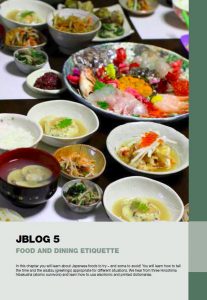
Content includes:
- Food
- Dining etiquette
- Telling the time
- Aisatsu for different times
- Casual & polite aisatsu
- Hiroshima & Nagasaki
- Hibakusha stories
- Using print & digital dictionaries
- Interviewing sister school students
- Aizuchi
- Giving opinions re food
Chapter 6: Keeping in Touch
The sixth chapter revisits numbers in the context of telephone calls. Students learn about the two telephone numbers for emergency services in Japan. The popular topics of samurai and ninja are explored including the role of women in samurai families. Literacy skills are developed through a focus on the particle の, emphasising correct apostrophe use in English. Methods of transport are introduced, and numeracy and thinking skills called upon to draw conclusions from transport graphs. Japanese currency is discussed as well as the influence of exchange rate fluctuations on the economy.
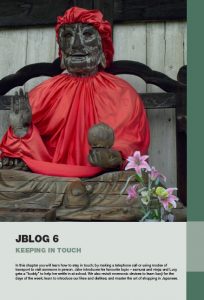
Content includes:
- Samurai & ninja
- Making a telephone call
- Particle focus の
- Transport
- Graph study re transport to school
- Setsubun festival
- Japanese currency
- Making simple purchases
- days of the week
- Likes & dislikes
- と and
Chapter 7: School Life
This chapter focuses on the popular topic of school life in Japan. It covers what Japanese students eat (おべんとう), what they do after school (じゅく、ぶかつどう), and how they make decisions (じゃんけん). Students learn vocabulary for classroom items and how to discuss their school timetable. The concepts ofぶんかさい and かていほうもんare also introduced.

Content includes:
- School life
- School subjects
- Janken game
- Subject preferences
- Graph study re subjects
- や
- 日本語 vs えい語 vs 国語
- School festivals
- Classroom items
- Numeracy task re budgeting
Chapter 8: Holidays and New Year Celebrations
The last chapter is timed for Term 4 and focuses on Christmas and New Year celebrations. Students learn about various activities that Japanese people like to do in their free time, such as ikebana and sumo wrestling. Students are challenged to question the validity of their perspectives as they explore the way colour is described in different cultures, such as Japanese, European, Aboriginal, and Torres Strait Islander societies. This chapter can also be programmed for the start of the year due to the reference to New Year.
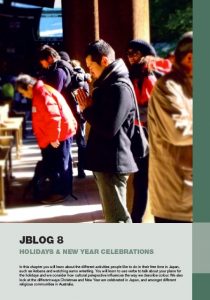
Content includes:
- Sumo
- Verbs in masu + masen form
- New Year resolutions
- Counters さつ
- Culture reflection re Christmas & New year
- New Year in Japan
- ねんがじょう
- Colours
- Impact of cultural perception eg colours
